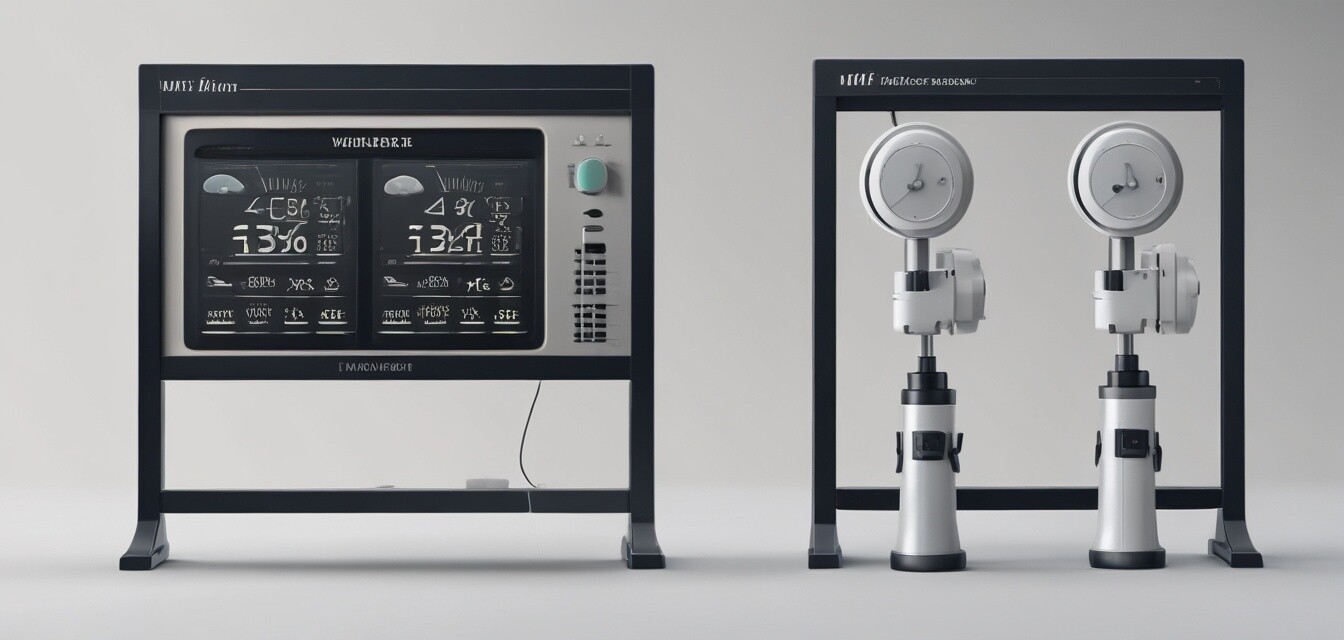
Comparing WiFi Weather Stations: Analog vs. Digital
Key Takeaways
- Understand the primary differences between analog and digital WiFi weather stations.
- Digital stations offer more precise readings and advanced features compared to analog options.
- Consider your needs, budget, and the level of complexity you are comfortable with when selecting a station.
- WiFi connectivity enhances the capabilities of a weather station, regardless of its type.
- Both types have pros and cons that cater to different user preferences.
Welcome to our comprehensive guide on comparing WiFi weather stations! Choosing the right weather station can be daunting, especially with the existence of both analog and digital models. In this article, we will explore the differences, advantages, and disadvantages of each type, presenting you with actionable insights to make an informed decision.
Understanding WiFi Weather Stations
WiFi weather stations collect and relay data about the weather in your area. By using WiFi technology, they can share real-time data online, allowing users to monitor conditions from anywhere. This section will provide a foundation for understanding the differences between analog and digital weather stations.
Overview of Analog WiFi Weather Stations
Analog weather stations rely on mechanical components to measure weather conditions. They typically feature simple gauges and dials for displaying data. Here’s a table summarizing some key characteristics:
| Characteristic | Description |
|---|---|
| Display | Uses mechanical dials and meters. |
| Precision | Generally less precise than digital models. |
| Power Source | Often powered by batteries or solar energy. |
| Maintenance | Requires periodic calibration and adjustment. |
| Durability | Tends to last longer if well maintained. |
Pros and Cons of Analog WiFi Weather Stations
Pros
- Simple to use
- No complex electronics involved
- Durable and long-lasting with proper care
Cons
- Less accurate readings
- Requires manual observation
- Limited features compared to digital stations
Exploring Digital WiFi Weather Stations
Digital weather stations utilize electronic sensors to measure weather conditions and display results in digital format. They usually connect to WiFi, providing numerous benefits:
| Characteristic | Description |
|---|---|
| Display | Offers digital readouts and potentially graphical data displays. |
| Precision | Typically offers more precise and faster readings. |
| Data Logging | Can store historical weather data for analysis. |
| Notifications | Can send alerts via smartphone or other devices. |
| Connectivity | Often supports integration with other smart home devices. |
Pros and Cons of Digital WiFi Weather Stations
Pros
- Highly accurate data
- Convenient online access to real-time data
- Wide variety of features and customizations available
Cons
- More expensive than analog options
- Requires specific knowledge for setup and maintenance
- Potential for electronic malfunctions
Key Differences: Analog vs. Digital
To clearly identify the most suitable option for your needs, let us summarize the key differences in a comparison table:
| Feature | Analog Weather Stations | Digital Weather Stations |
|---|---|---|
| Accuracy | Moderate | High |
| Ease of Use | Simple | Moderate to complex, depending on the features |
| Price Range | Generally lower | Can range higher |
| Maintenance | More hands-on | Less frequent, automated options |
| Technology | Basic mechanics | Advanced electronics |
Making Your Decision
When deciding between an analog and a digital WiFi weather station, consider your personal needs:
- Assess your budget and whether you want to invest in more expensive, feature-rich models.
- Consider the importance of accuracy in your weather readings and if you are willing to maintain equipment regularly.
- Determine where you’ll be placing the station and if its connectivity and additional features provide value for you.
Conclusion
Ultimately, choosing between analog and digital WiFi weather stations comes down to personal preference and financial considerations. Analyze your priorities, compare options, and choose the device that suits your lifestyle best. For more information on the various types of weather station gadgets available, feel free to explore our categories on Wi-Fi weather stations, barometers, and rain gauges.
Further Reading Ideas
If you're looking to dive deeper into weather station technologies and features, check out our other blog posts: